
Where to find some of the world’s best wild forest honey, and why it’s under threat
The forests of eastern Sumbawa in Indonesia produce sublime honey thanks to its native flora and giant bees, but logging, modern farming techniques and mining threaten the island’s ecology
It’s barely 9am and already I’m sweltering. The heat of the day has kicked in, and it’s making our ascent through the thick vines and undergrowth extremely hard going. Two hours into our trek since we left the tiny village of Adu, and fortunately we’ve almost reached our destination: a clump of large trees growing just below a ridge line high in the forest in eastern Sumbawa, the next island to the east of better known Lombok in Indonesia.
I’m accompanied by three villagers: Pak Abidin, and his two younger apprentices Sa’Ban and Ibrahim. Together we’re on the hunt for one of Sumbawa’s most precious exports: wild forest honey, known in Bahasa Indonesia as madu liar.
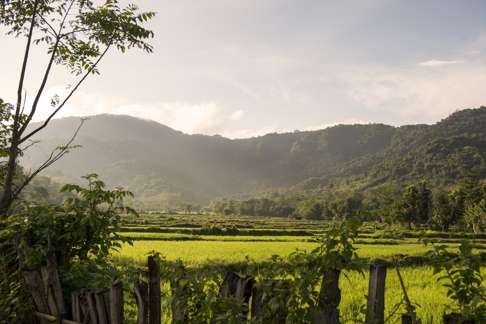
However, the bees’ habitat could be at risk, unless more is done to ensure all of Sumbawa’s pristine forests are protected from developments such as logging and damaging agricultural practices. Mining is also a threat in this area, with the islanders having protested, and so far halted, the construction of a large gold mine close to nearby Dompu in 2011.
With villagers concerned that the project would destroy their land, threaten forests and drain water supplies, the protests in the regional capital, Bima, turned ugly, with clashes between locals and authorities making the national news.
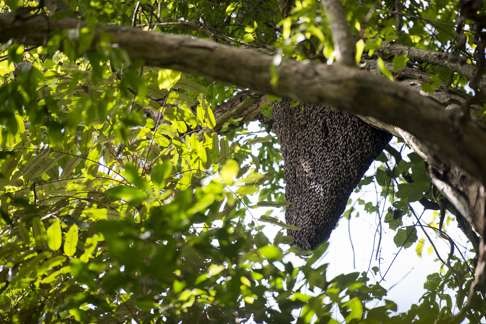
Clearly passionate about the environment, many Sumbawans have begun to take positive action to protect their island. Set up five years ago to safeguard and regulate the majority of Sumbawa’s honey production, the Indonesian Forest Honey Network (JMHI) is an NGO that aims to protect and conserve the land, by improving the welfare of farmers with an emphasis on local knowledge.
It’s over 20 years of this local knowledge that has brought us this particular spot, as Abidin knows instinctively where to look, having spent countless hours roaming the forests of this beautiful region.
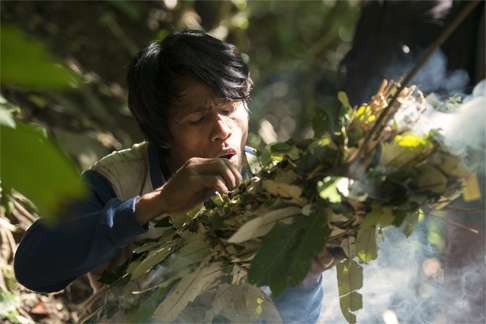
As we reach the ridge line, we glimpse an enormous beehive (called a sarang) hanging off a bough some 10 metres up in the canopy. According to Abidin, you’ll only find hives in places that are exposed directly to either the morning or afternoon sun, hence they are almost always dangerously high up (it also explains why all known attempts to domesticate this genus into kept hives, where the bees are in darkness, have failed).
I love this job, though; I feel very lucky that I get to spend so much time in these beautiful forests. I do hope we can have some help
The ground plunges steeply away down into the valley, with the trees growing out at a 45 degree angle. This means that from our vantage point the hive is almost at eye level, but unless you’re Tarzan, the only way to the top is from the base.
Armed only with a bundle of smoking branches and his trusty machete, Abidin shins up the trunk in seconds, working quickly and calmly to rob the hive, as a few thousand angry bees are dislodged and begin swarming around. It’s a genuinely frightening spectacle - even from 20-odd metres away, but he insists he doesn’t get stung, and sets to work slicing off the outer layer of the honeycomb.
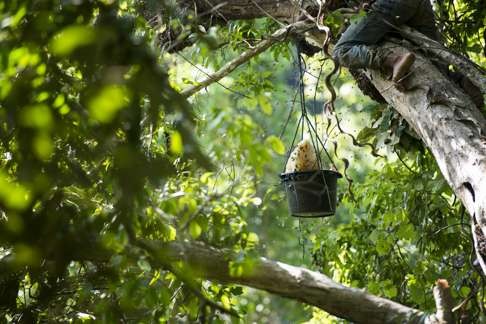
He fills up the bucket dangling underneath with the honeycomb, before lowering it down and descending as quickly as he went up. Having retreated to a safe distance, we do a quick taste test before carefully decanting our spoils into a more portable bottle. The flavour is simply magnificent – a light amber hue in appearance with floral notes and an earthy sweetness that beats anything you’ll find at the supermarket.
I ask Abidin whether there is any sort of mass production or co-op societies for the honey down this way, but as we take a rest near a fresh spring to cook up some lunch, he tells me it’s only further west, closer to the island’s largest town, Sumbawa Besar, where the JMHI is actively helping out at this stage. Here in the east, all honey harvesting is done purely as a cottage industry, and the few farmers like Abidin that there are rely solely on private clients ordering directly.
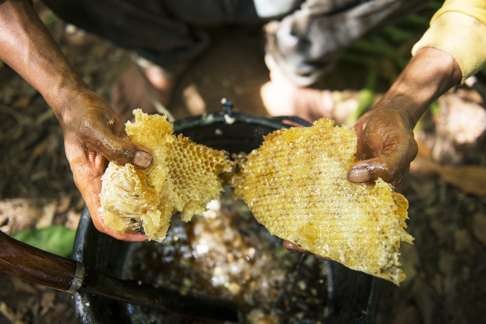
As dusk begins to fall we make our way back down towards the village, our way initially guided by the call of the evening prayers at the local mosque. It’s not long before we arrive back at Abidin’s house, exhausted, but with a hoard of honey that will keep us all going for a good few months.
